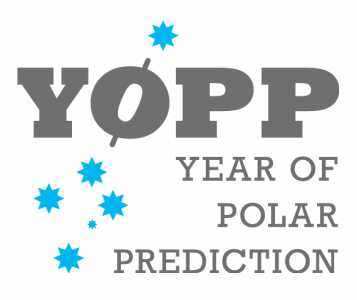This week, the Special Observing Period in the Antarctic starts. For three months, weather services and international scientists will increase the number of atmospheric and sea-ice observations from different Antarctic land stations, during terrestrial field expeditions and aboard research vessels in the Southern Ocean.

Goal of the international Year of Polar Prediction is to improve weather and sea-ice forecasts in the polar regions (see more here).
When days are getting longer and research stations become busy, the summer is about to start on the Antarctic continent. November is the month when the austral field season begins. This summer, extra atmospheric and sea-ice measurements in addition to the routine observations will be carried out as a contribution to the Year of Polar Prediction (YOPP). YOPP has been initiated by the World Meteorological Organization’s (WMO) World Weather Research Programme (WWRP). In response to the rapid climate changes in polar regions and related transformation of human activities, the project aims to improve environmental safety by improving forecasts in the Arctic and Antarctic. Earlier this year, two YOPP Special Observing Periods already took place in the Arctic.
More than 2,000 extra radiosondes expected
Expected are more than 2,000 extra radiosondes released from numerous meteorological stations from 16 November 2018 to 15 February 2019. In addition to atmospheric observations, YOPP-endorsed field campaigns and expeditions as well as autonomous instruments will feed their real-time or near-real time data into the Global Telecommunications System of WMO. The additional data generated during the Special Observing Period in the Southern Hemisphere (YOPP-SH SOP) will be used for numerical experimentation and internationally coordinated verification activities as well as for forecast evaluation and observational impact studies. Extra measurements help to identify ways to improve the prediction systems. Based on more accurate and reliable forecasts of weather and sea-ice conditions, recommendations for the future Southern Hemisphere Polar Observing Systems can be provided.
The Antarctic Special Observing Period marks another milestone for the Year of Polar Prediction. Preparations for the YOPP-SH SOP have been ongoing since the YOPP Summit in Geneva in 2015. Here, the YOPP-SH committee formed. Since then, the committee led by David Bromwich from the Byrd Polar and Climate Research Center at the Ohio State University has been meeting every year to report on national commitments and plans for the Antarctic Special Observing Period.
Antarctic YOPP Supersites
In particular, Antarctic YOPP Supersites such as the French site Dumont D’Urville, the German Neumayer III station, the Korean station King Sejong or the British Halley and Rothera stations will launch extra weather balloons (for exact locations of YOPP Supersites see the YOPP Observations Layer). The increased radiosonde activity from meteorological stations and cruise expeditions can be followed on the ECMWF observation monitoring webpages (see here; chose different observing systems and regions). Data obtained by surface buoys in the Southern Ocean is also sent to the GTS; additional buoy deployments will increase the network once the research icebreakers start heading into the Antarctic waters for the summer.
As during the first two SOPs in the Arctic earlier this year (see here for an overview), many field campaigns and expeditions endorsed by YOPP provide additional specific observations which will enable a better understanding and hence representation of environmental processes in the Antarctic weather, climate, and sea-ice models. Details on the YOPP-endorsed projects contributing to the Antarctic SOP can be found through the YOPP Explorer and by following on twitter and instagram @polarprediction and hashtags #polarprediction and #YOPPextraobs.
